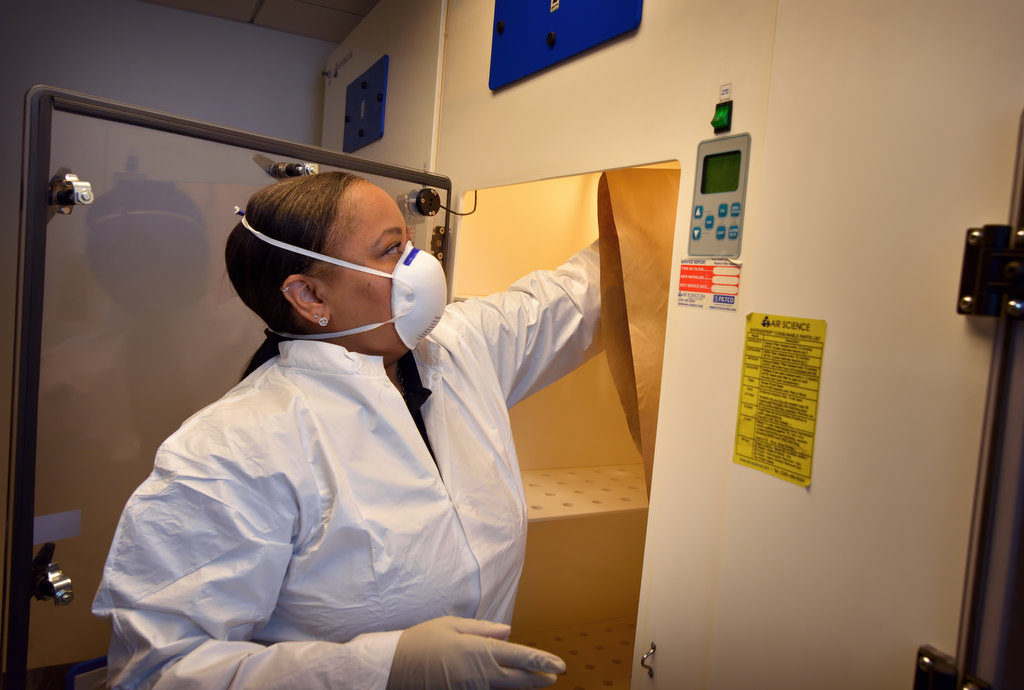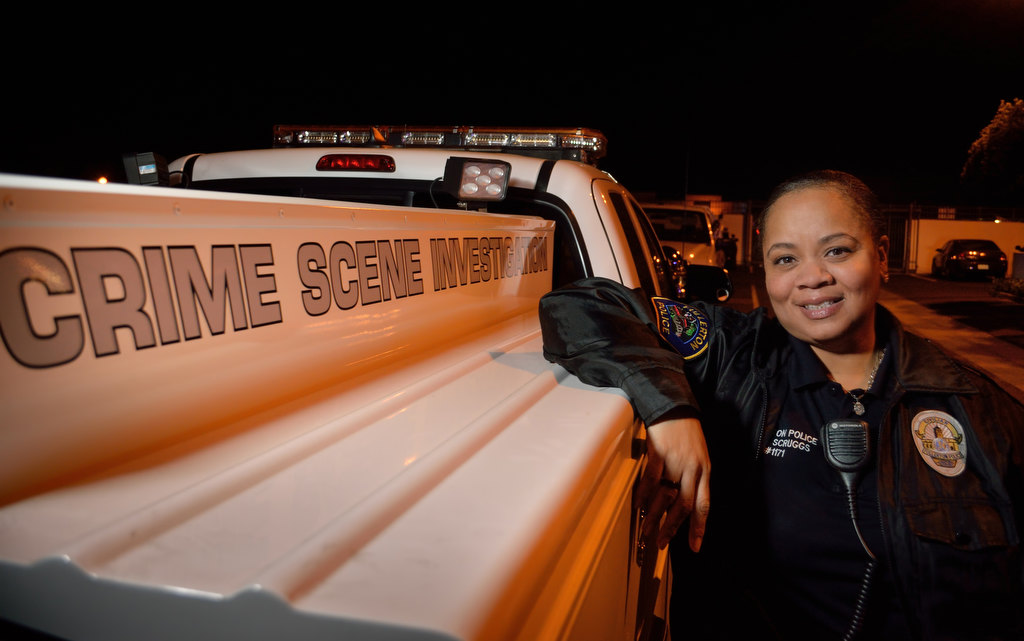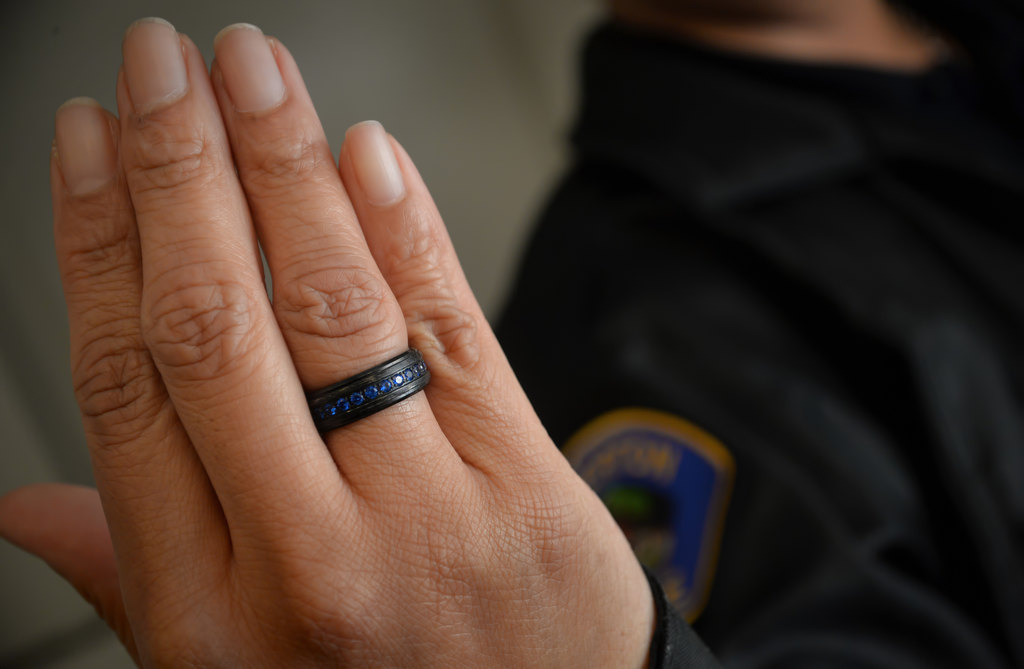It was in Dawn B. Scruggs’ third year as a police dispatcher at Fullerton Police Department that she started getting curious about CSI.
Having already worked for Hawthorne Police Department as a police and fire dispatcher for eight years, she had and still has the utmost respect for police dispatchers as “the heartbeat of the department,” but she wanted to know the outcome of those calls and see them through the justice system.
“Since I have such a healthy interest in justice and seeing the puzzle come together, I needed more,” says Scruggs, now a forensic specialist II who has been working in Fullerton PD’s CSI department since 2002.
“I don’t want to be in the position where I have to arrest the bad guy,” Scruggs says. “But I did want to see everything.”
She found the perfect fit in crime scene investigation.
A Detailed Procedure
When a crime is committed in Fullerton, an officer responds to the scene and determines whether it needs to be documented. If it does, FPD’s CSI team is called – and there’s always someone on duty. Depending on the size of the crime scene, one or more of the agency’s five crime scene investigators will go to the crime scene.
The CSI specialist walks through the crime scene with the detective, taking notes and looking at the evidence.
“There are several eyes out there looking and finding other pieces of evidence,” says Scruggs. “We all kind of work off of each other quite well.”
Then the investigator will photograph the entire scene without touching anything.
“I want to see the scene the way the suspect left it,” Scruggs says.

Dawn Scruggs, of the Fullerton PD’s CSI department, in a special blood drying room used to preserve the blood found on clothes for evidence.
Photo by Steven Georges/Behind the Badge OC
The only exception is if an officer moves a gun to get it away from a suspect.
The next step is to identify the evidence that will be collected. Number markers are placed on these pieces of evidence.
Then the scene is photographed (and also videotaped in the case of a homicide) with the number markers in place. If there’s a body, it is photographed as well, but not touched or moved – only the coroner investigator can move the body.
“Then we leave the evidence the way it is until the detectives do their assessment,” says Scruggs.
While all this is going on, a CSI team member is carefully drawing a detailed diagram of the scene. Each piece of evidence is measured from two points in order to obtain an exact replica of the scene. If the scene needs to be recreated, it can be based on the diagram.
“The documentation is very important,” Scruggs says. “The measurement is very important.”
The next step is evidence collection, meaning each piece of evidence is individually bagged. If blood is collected, it is collected on a swab and bagged. Each piece of evidence is sealed with evidence tape and labeled with what’s inside as well as with the corresponding number marker. CSI specialists also will collect any fingerprints found on the scene.

Dawn Scruggs, of the Fullerton PD’s CSI, with the department’s Crime Scene Investigation truck.
Photo by Steven Georges/Behind the Badge OC
“None of the evidence touches each other so there’s no cross-contamination,” Scruggs says.
All members of the CSI team are trained in reading blood evidence. So if there’s blood spatter from a shooting or stabbing, for instance, an investigator analyzes the scene to figure out the point of impact and other relevant information. If there is a large amount of blood on the scene, a more specialized blood spatter expert will be called out to diagram the spatter and collect the blood.
Once everything is bagged and sealed, CSI does a final walk-through with detectives to make sure everything has been collected.
“It’s a lot of work … and it’s so incredibly detailed,” Scruggs says.
Then everything is transported back to the station.
Back at the Office
The work isn’t over once CSI returns to the station. Photos still must be logged and the diagram must be put into the computer. Video must be downloaded and evidence booked. And, of course, there’s a report that must be completed.
“One minute of a crime takes weeks and weeks of work for us,” Scruggs says. “As daunting as the tasks are, it’s the most exciting thing I’ve done in my life. I wouldn’t trade it for the world.”
In fingerprint cases, the collected prints are scanned and compared to fingerprint candidates from the Orange County Crime Lab’s database.

Dawn Scruggs wears a ring that memorializes fallen officers every time she goes to work. Photo by Steven Georges/Behind the Badge OC
“My job is to carefully examine each print to determine whether it belongs to the print that was collected from the crime scene,” Scruggs says.
If a match is found, the investigator writes up a report and then two other investigators must confirm the result.
“We need to be 100 percent sure to make sure those prints belong to that person before we put anyone away,” Scruggs says.
A Fantastic Career
Every year Scruggs is asked to talk to students at the Tiger Woods Learning Center in Anaheim about forensics and pursuing it as a career.
Since “it was the best decision I ever made for my career,” she wants to encourage children who have interest in forensics.
“I really want to see kids take it over and just get involved,” Scruggs says.
Speaking to 11- to 17-year-olds, she tells students that if they want to work in crime scene investigation, when they attend college they should take courses in DNA, fingerprinting and photography. Photography is a big part of crime scene investigation, so it pays off to be skilled at it.
Another important part of working in CSI is personality.
“You have to know how to dissociate yourself from the scene,” Scruggs says. “It’s very easy to look at it and get sad, especially when it’s involving a baby. I’ve had a couple of those.
“You don’t want to take it home and have it affect you.”
But if you can learn to focus on the work and the procedural details and not the emotion of a crime scene, this can make a great career choice for science-minded students interested in law enforcement.
“I’m in love with my career,” Scruggs says. “You couldn’t pay me to do anything else.”
 Behind the Badge
Behind the Badge



